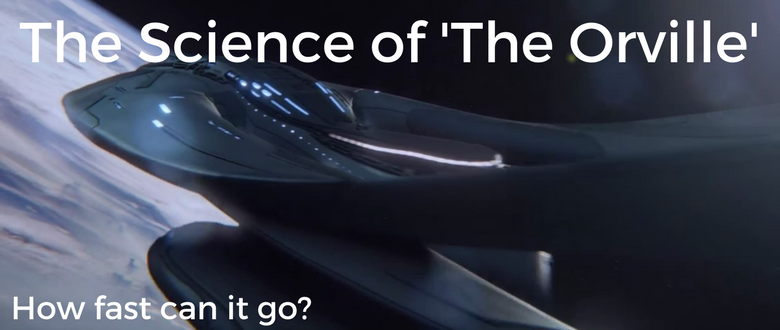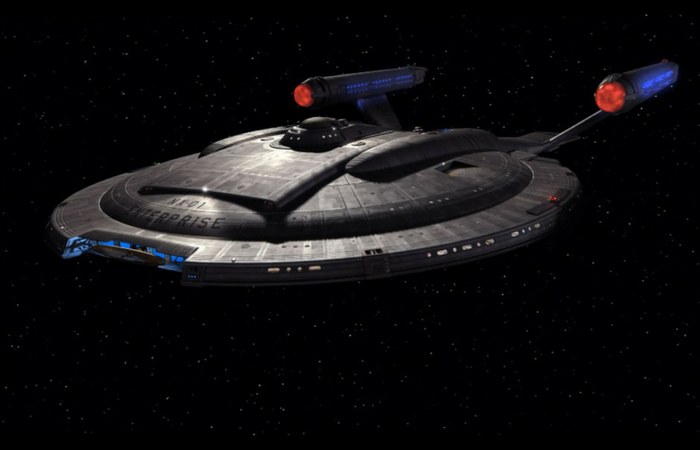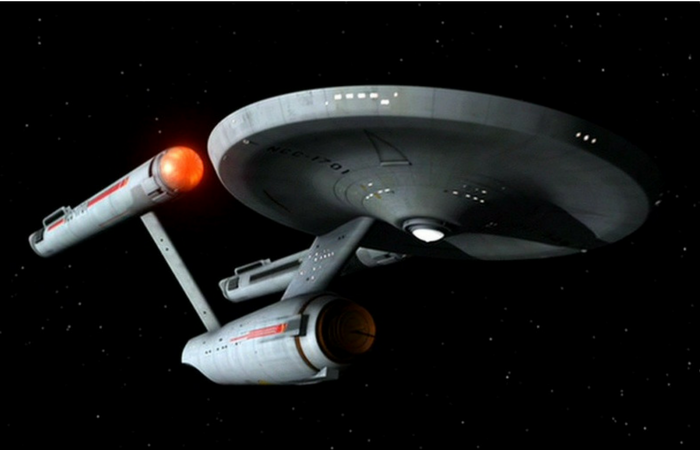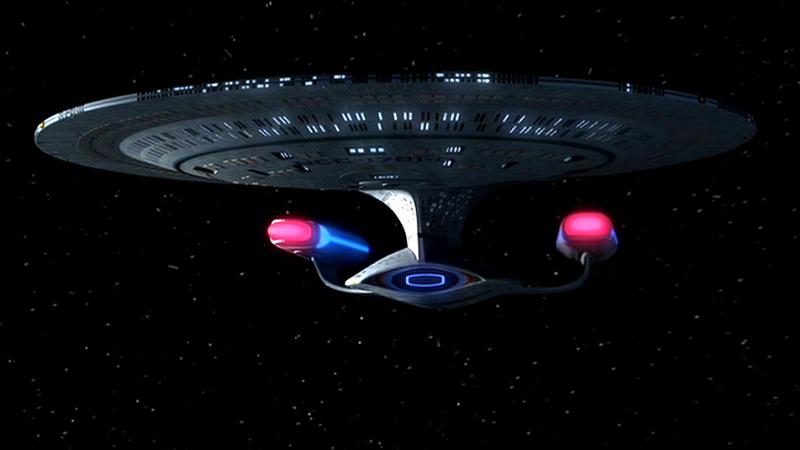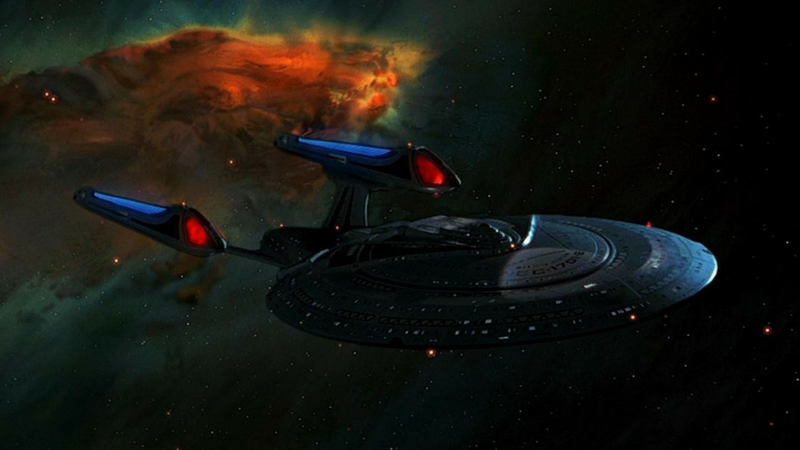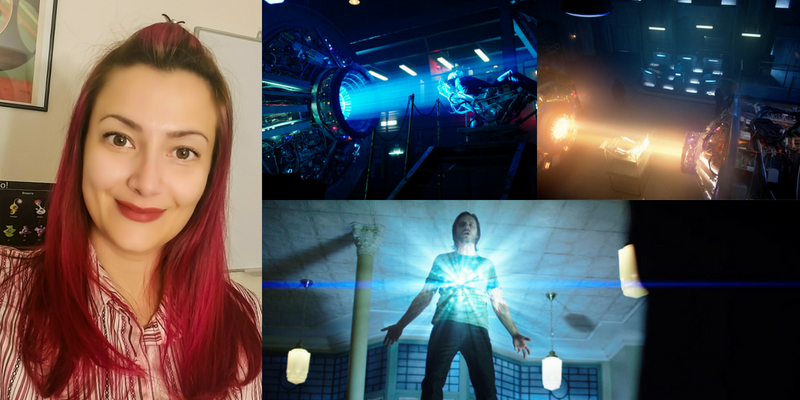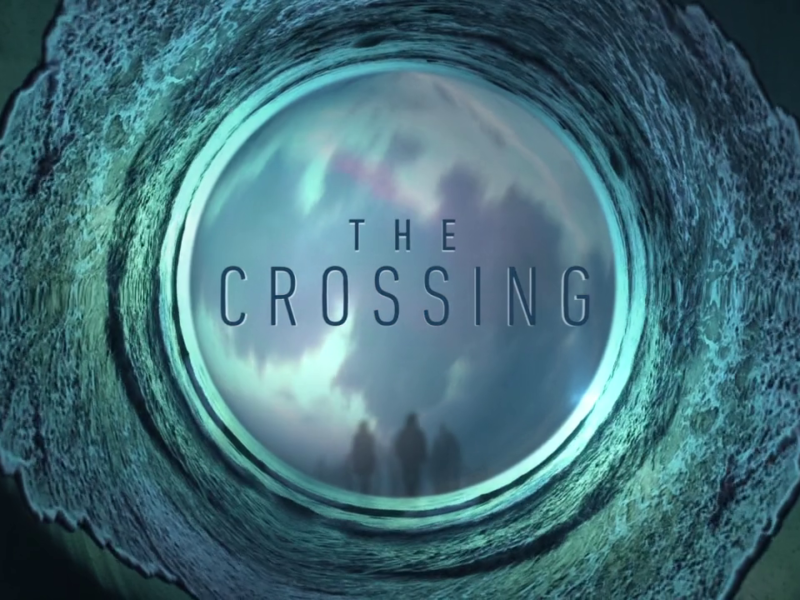In The Orville episode, "Pria," Capt. Ed Mercer (Seth MacFarlane) tells Pria Lavesque (Charlize Theron) his ship is powered by a Dysonium quantum drive capable of speeds in excess of 10 lightyears (ly) per hour. This speed scale is far more intuitive than Star Trek's warp factor but how exactly does it compare? Could the Orville beat the Enterprise?
What does the Orville's speed mean?
Captain Mercer mentions that his ship can go an excess of 10 ly an hour. We will assume this means the ship can travel faster for limited periods should an emergency arise. There are 8.760 hours in a year. If the Orville travelled at that speed for a year, it would travel a total distance of D = 10 × 8,760 = 87,600 ly. A lightyear is the distance a light beam will travel in one year. This means that the Orville can travel at speeds of 87,600 times the speed of light or 87,600c.
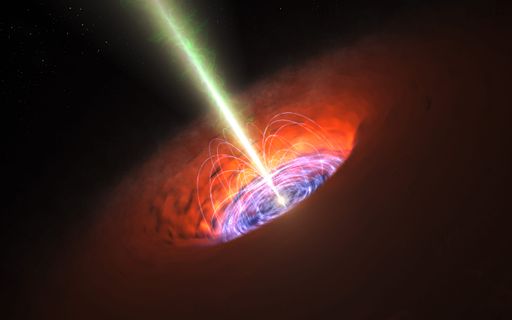
To put this in context, our nearest star system Alpha Centauri is just 4.2 ly away. The Orville could travel that distance in a little over 25 minutes. If the crew gets hard-up for money, they can run an inter-solar system pizza delivery service. Getting to the Galatic Center—the rotational center of the Milky Way—which is about 27,000 ly away, will take a little over 112 days. Assuming the ship's engines can run constantly for extended periods of time, the Orville crew could get there in less than four months.
Enterprise NX-01
The Enterprise (NX-01) built in 2151 was Earth's first warp 5 capable ship. It had a maximum speed of warp 5.06 but could reach speeds of warp 5.2 for short periodsin the case of an emergency. We can convert this speed relative to the speed of light using the formula v = w3c, where w is the warp factor. Plugging the NX-01's maximum speed into the warp equation and we get a maximum speed of 129.6c. This is nowhere close to the Orville's max speed. Maybe the other ships to bear the name Enterprise will fare better.
Travel to Alpha Centauri will take the Enterprise close to 12 days. In a race against the Orville, the NX-01 loses easily. While it will take months for the Orville to make the trip to the center of the galaxy, it will take the Enterprise over two centuries, about 208 years to be exact. The crew of the Enterprise may begin the journey but they won't live to see the crew of the Orville gloat over their victory.
USS Enterprise NCC-1701
The Enterprise captained by James T. Kirk (William Shatner) is a much faster ship than the NX-01, coming in at warp 8.0. This means the NCC=1701 can travel at speeds that is 512 times the speed of light or 512c. Again, this is nowhere near the Orville's speed so, it too will easily be beaten in a race. A race to Alpha Centauri will take this Enterprise about three days. A trip to the Galatic Center is a little better than her predecessor but Kirk will still take several decades to get to the finish line, taking about 53 years to get there. Again, the crew of the Orville will be waiting for some time before the Enterprise reaches the finish line and they will probably be laughing while they are at it.
USS Enterprise NCC-1701D
This is where things get interesting. For Star Trek: The Next Generation and subsequent series, Michael Okuda modified the previous formula to incorporate a few important differences. For warp factors 1 through 9, the formula to calculate a ship's speed is v = w10/3c but for warp speeds between 9 and 10, the speed increases exponentially. This has come to be known as the Okuda scale as this section of the graph was hand drawn. This means there is no known formula for the interval between 9 and 10 but fortunately Wolfram Alpha can extrapolate a value from the curve printed in the Star Trek: The Next Generation Technical Manual. The USS Enterprise NCC-1701D has a maximum speed of warp 9.2 but can travel at warp 9.6 in emergency situations up to 12 hours. Plugging those specs into Wolfram Alpha yields speeds of 1,649c and 1,909c respectively.
Though more advanced than the previous ships to carry the name Enterprise, this ship is still much slower than the Orville. Capt. Jean-Luc Picard (Patrick Stewart) manages to reach Alpha Centauri in a little under a day—22.3 hours—but the Orville crew has already had a full day's rest and relaxation as they waited for the Enterprise crew to cross the finish line. Running the engines at warp 9.6 will only shave three hours off the Enterprise's trip which means the Orville still wins. If anything, the Enterprise-D fares better than previous ships in a race to the Galactic Center but this is still nothing to boast about. A trip to the center of the Milky Way takes a little over 16 years. The crew of the Enterprise will make it in their lifetimes but any children born on the Orville will already be in high school and probably be laughing at the relic they learned in their history classes as it crosses the finish line.
USS Enterprise NCC-1701E
If the Enterprise-D can't beat the Orville surely the Enterprise-E will. It is, after all, a more advanced ship that can travel at warp 9.995. As this section of the graph increases asymptotically, it is several times faster than Enterprise-D, clocking in at 14,507c. It seems that despite being a more advanced ship, the Federation can't build something that will beat the Orville. A race to Alpha Centauri isn't as big a loss compared to previous Enterprises—the Enterprise-E arrives in a little over two-and-a-half hours. They still lose the race but it's not bad compared to the other ships. Things are also better in a race to the Galactic Center. Obviously Picard and his crew lose to the Orville but they get there in a little over 1 year and 10 months. Maybe the Orville can have a little fun while they are at it. They can make about three round trips to the Galactic Center before the Enterprise-E makes it across the finish line.
Who is Faster?
| Ship | Maximum Speed/c | Emergency Speed/c |
|---|---|---|
| Orville | 87,600.00 | |
| NX-01 | 127.26 | 140.61 |
| NCC-1701 | 512 | |
| NCC-1701D | 1,649 | 1,909 |
| NCC-1701E | 14,507 |
Definitely the Orville. Maybe the next generation of Federation ships will beat what the Union has to offer but I won't be holding my breath anytime soon. To be fair, Star Trek has not always strictly adhered to transit times in the TV shows or movies but we can safely say that the Orville is truly the ship you want to be on—it will get you where you want to go with lots of time to spare.
Check out the calculations behind this article in "Physics of Orville vs. Enterprise".

